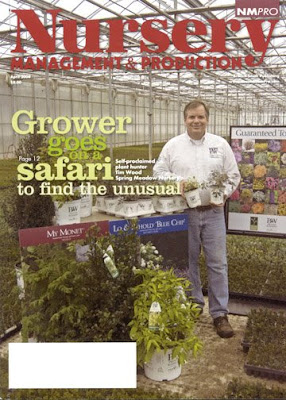
I recently read an annual report for a botanical garden entitled Hope for Healing the Planet. Among other things I learned that they were embarking on a new strategic plan. Over the last twenty years botanical gardens and arboreta have evolved to the point where they are faced with redefining their purpose. I recall a conversation with Peter Ashton, the Director of the Arnold Arboretum, in which he explained that his most daunting task was justifying the Arboretum to Harvard in an age of molecular biology. Since that conversation, I have watched with interest as public gardens have evolved to redefine their relevance.
What is botanical garden’s greatest asset? Why do people visit? Why do they become members? What do we do best? These are the questions to be asked during the strategic planning process. Do the visitors come to see the rose garden, the children’s garden, the home idea gardens, the prairie, or is it they’re intrigued by their conservation efforts?
You know the answer – they come because the botanic garden is an oasis of breathtaking beauty in an urban jungle. The garden inspires; it reveals the beauty of plant diversity, and give us ideas and hope that plants and people can coexist, and shows us that life is enhanced when we are surrounded by a diversity of plants.
And now in this time of Sustainability and Green, the clear need, the necessary message, and the great opportunity being neglected is that plants and gardens need to be at the core of the Green movement. But why plant tree seedlings in a distant forest as carbon offsets when we need to be planting trees, shrubs, perennials in our cities and yards; close to the sources of carbon and pollution, and where people can actually be healed by the power of plants?
I would encourage everyone to champion gardening as a green lifestyle. A year ago, standing on top of a hotel in Nagoya, Japan I was saddened by the prospect of concrete to the distant horizon. What a contrast to Chicago which is a beacon of green to all other cities in its devotion to plants and gardens. What a unique time and place we are in to promote the healing power of plants by planting our own yards and neighborhoods! Change happens locally.
What can we do to promote the healing power of plants and plant diversity at a local level? Encourage people to grow plants in their yard then expand to their neighborhoods and city. I know a man that loves to collect trees and shrubs, but he quickly ran out of yard space. He asked his neighbor if he could plant some of his trees and shrubs on his property and the neighbor agreed. Soon this yard was filled with new species of plants so the man went to another neighbor and did the same. Today his entire neighborhood is a beautiful, mapped and labeled botanical garden accessible to all. While in Korea a man told me the native species of White Forsythia, Abeliophyllum distichum was endangered, and that as a conservation effort the government made is illegal to grow or sell. He was in awe when I told him we sell about 5,000 a year and that people actually plant it in their yards.
While I commend botanical gardens and garden writers for picking up the banner of global warming, invasive plants, habitat conservation, etc., I question whether this should be our main role. If it is Conservation that makes a botanic Garden relevant and defines its purpose (as the annual report I read suggested) then why do they waste the time and money maintaining a garden?
Many of you reading this blog have the knowledge and voice to promote gardening as way for everyone to heal the planet. I urge that you keep this at the center of your personal mission statement. Something to consider as you revise your personal strategic plan. Share this with a friend and ask them to comment.











